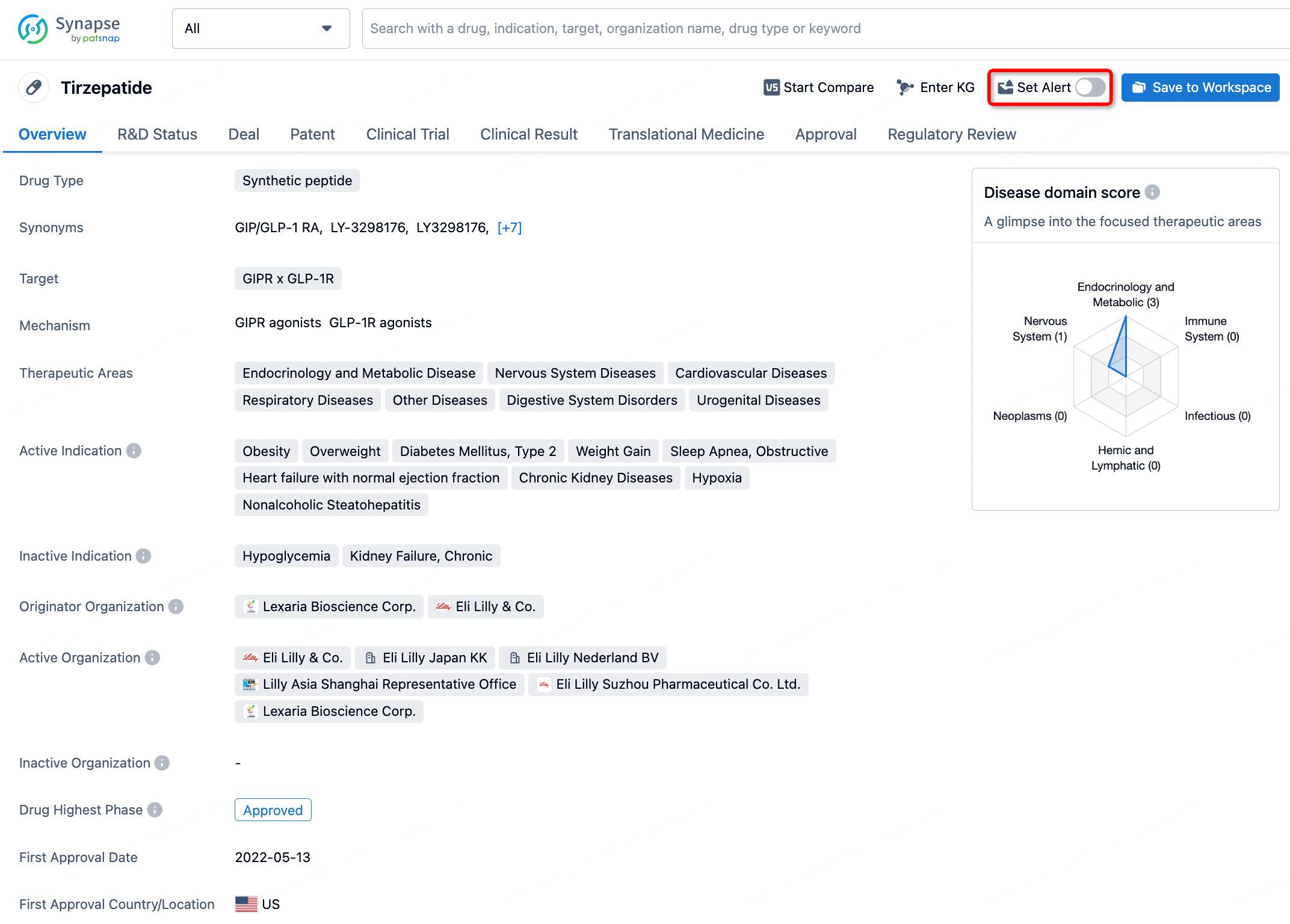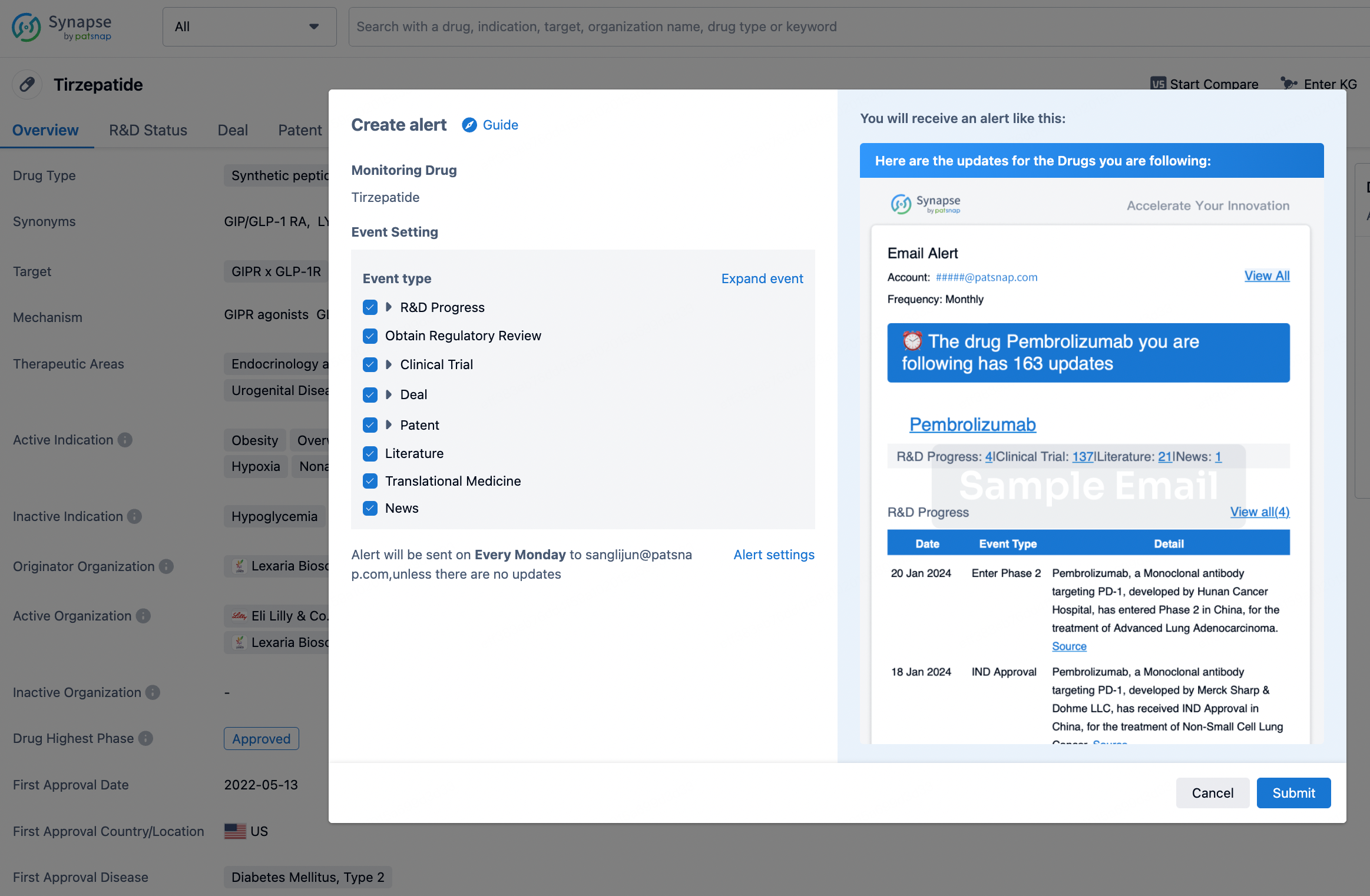Request Demo
What is the mechanism of Loxoprofen Sodium Hydrate?
17 July 2024
Loxoprofen Sodium Hydrate is a nonsteroidal anti-inflammatory drug (NSAID) commonly used to alleviate pain and reduce inflammation in conditions such as arthritis, musculoskeletal disorders, and postoperative pain. Its mechanism of action, pharmacodynamics, and pharmacokinetics are intriguing aspects that contribute to its therapeutic efficacy.
Loxoprofen Sodium Hydrate operates primarily by inhibiting the cyclooxygenase (COX) enzymes, which play a pivotal role in the synthesis of prostaglandins. Prostaglandins are lipid compounds that mediate inflammation, pain, and fever as part of the body's response to injury or infection. The COX enzymes exist in two main isoforms: COX-1 and COX-2. COX-1 is constitutively expressed and is involved in maintaining physiological functions such as gastric mucosal protection and platelet aggregation. Conversely, COX-2 is inducible and is mainly involved in inflammatory processes.
Upon administration, Loxoprofen Sodium Hydrate undergoes rapid absorption and is converted into its active metabolite, trans-OH loxoprofen, through a process known as biotransformation. This metabolite is responsible for exerting the drug's pharmacological effects. It inhibits both COX-1 and COX-2, leading to a decrease in the production of prostaglandins. By reducing prostaglandin synthesis, Loxoprofen Sodium Hydrate effectively diminishes inflammation and alleviates pain.
One of the distinguishing features of Loxoprofen Sodium Hydrate compared to other NSAIDs is its prodrug nature. As a prodrug, it remains inactive until it undergoes metabolic conversion in the body. This characteristic helps in reducing gastrointestinal side effects commonly associated with NSAIDs. Once converted into its active form, Loxoprofen can exert its therapeutic effects more specifically at sites of inflammation, minimizing systemic exposure and potential adverse effects.
The pharmacokinetics of Loxoprofen Sodium Hydrate also highlight its efficacy and safety profile. After oral administration, the drug is rapidly absorbed from the gastrointestinal tract and reaches peak plasma concentrations within one to two hours. Its half-life is relatively short, around 1.5 to 2 hours, which facilitates quick onset of action and allows for flexible dosing schedules. The drug is primarily excreted via the urine, with a small fraction eliminated through fecal routes.
Despite its beneficial effects, it is essential to consider the potential side effects and contraindications associated with Loxoprofen Sodium Hydrate. Common side effects include gastrointestinal disturbances such as nausea, vomiting, and dyspepsia. Due to its COX inhibition, prolonged use may increase the risk of gastrointestinal ulcers and bleeding. Patients with a history of peptic ulcer disease, renal impairment, or cardiovascular conditions should use this medication cautiously and under medical supervision.
In conclusion, Loxoprofen Sodium Hydrate is a valuable NSAID with a unique prodrug mechanism that enhances its therapeutic efficacy while minimizing gastrointestinal side effects. By inhibiting COX enzymes and reducing prostaglandin synthesis, it effectively alleviates pain and inflammation. Understanding its pharmacodynamics and pharmacokinetics provides insight into its clinical applications and helps in optimizing its use for various inflammatory conditions. As with any medication, careful consideration of potential side effects and contraindications is essential to ensure safe and effective treatment.
Loxoprofen Sodium Hydrate operates primarily by inhibiting the cyclooxygenase (COX) enzymes, which play a pivotal role in the synthesis of prostaglandins. Prostaglandins are lipid compounds that mediate inflammation, pain, and fever as part of the body's response to injury or infection. The COX enzymes exist in two main isoforms: COX-1 and COX-2. COX-1 is constitutively expressed and is involved in maintaining physiological functions such as gastric mucosal protection and platelet aggregation. Conversely, COX-2 is inducible and is mainly involved in inflammatory processes.
Upon administration, Loxoprofen Sodium Hydrate undergoes rapid absorption and is converted into its active metabolite, trans-OH loxoprofen, through a process known as biotransformation. This metabolite is responsible for exerting the drug's pharmacological effects. It inhibits both COX-1 and COX-2, leading to a decrease in the production of prostaglandins. By reducing prostaglandin synthesis, Loxoprofen Sodium Hydrate effectively diminishes inflammation and alleviates pain.
One of the distinguishing features of Loxoprofen Sodium Hydrate compared to other NSAIDs is its prodrug nature. As a prodrug, it remains inactive until it undergoes metabolic conversion in the body. This characteristic helps in reducing gastrointestinal side effects commonly associated with NSAIDs. Once converted into its active form, Loxoprofen can exert its therapeutic effects more specifically at sites of inflammation, minimizing systemic exposure and potential adverse effects.
The pharmacokinetics of Loxoprofen Sodium Hydrate also highlight its efficacy and safety profile. After oral administration, the drug is rapidly absorbed from the gastrointestinal tract and reaches peak plasma concentrations within one to two hours. Its half-life is relatively short, around 1.5 to 2 hours, which facilitates quick onset of action and allows for flexible dosing schedules. The drug is primarily excreted via the urine, with a small fraction eliminated through fecal routes.
Despite its beneficial effects, it is essential to consider the potential side effects and contraindications associated with Loxoprofen Sodium Hydrate. Common side effects include gastrointestinal disturbances such as nausea, vomiting, and dyspepsia. Due to its COX inhibition, prolonged use may increase the risk of gastrointestinal ulcers and bleeding. Patients with a history of peptic ulcer disease, renal impairment, or cardiovascular conditions should use this medication cautiously and under medical supervision.
In conclusion, Loxoprofen Sodium Hydrate is a valuable NSAID with a unique prodrug mechanism that enhances its therapeutic efficacy while minimizing gastrointestinal side effects. By inhibiting COX enzymes and reducing prostaglandin synthesis, it effectively alleviates pain and inflammation. Understanding its pharmacodynamics and pharmacokinetics provides insight into its clinical applications and helps in optimizing its use for various inflammatory conditions. As with any medication, careful consideration of potential side effects and contraindications is essential to ensure safe and effective treatment.
How to obtain the latest development progress of all drugs?
In the Synapse database, you can stay updated on the latest research and development advances of all drugs. This service is accessible anytime and anywhere, with updates available daily or weekly. Use the "Set Alert" function to stay informed. Click on the image below to embark on a brand new journey of drug discovery!
AI Agents Built for Biopharma Breakthroughs
Accelerate discovery. Empower decisions. Transform outcomes.
Get started for free today!
Accelerate Strategic R&D decision making with Synapse, PatSnap’s AI-powered Connected Innovation Intelligence Platform Built for Life Sciences Professionals.
Start your data trial now!
Synapse data is also accessible to external entities via APIs or data packages. Empower better decisions with the latest in pharmaceutical intelligence.


